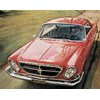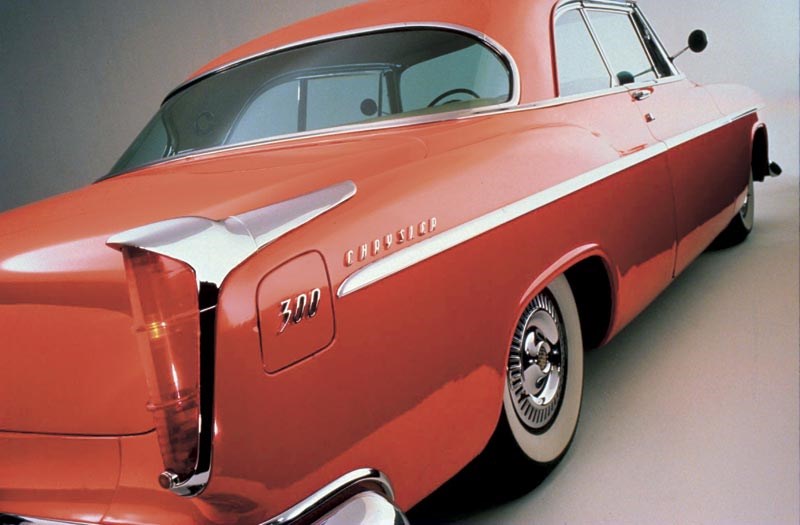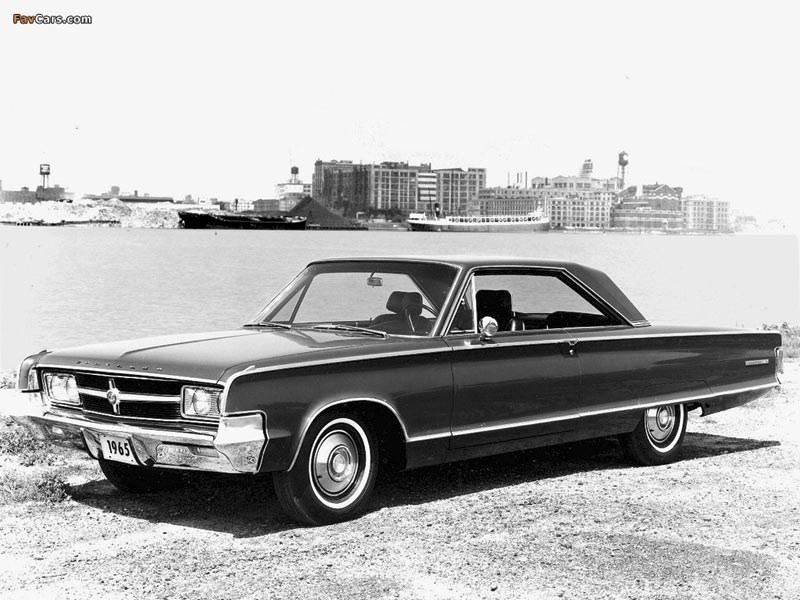1955-70 Chrysler 300: Buyers Guide
 Chrysler 300 series
Chrysler 300 series

 Chrysler 300 series
Chrysler 300 series

 Chrysler 300 series
Chrysler 300 series


|
|
Chrysler 300 series
|

|
|
Chrysler 300 series
|

|
|
Chrysler 300 series
|
Snapshot: Chrysler's 'letter series' 300S transformed a conservative brand into a forerunner of the US performance car culture...

|
|
Buyer's Guide: 1955-70 Chrysler 300
|
1955-70 Chrysler 300
WHAT IS IT?
Chrysler’s 300-Series cars fall into two clearly defined categories. Models from the 1950s with fabled Hemi-head V8s are scarce and highly-prized. After race-circuit duties had been transferred to Dodge and Plymouth-badged contenders, 300s from the 1960s rank only as well-equipped addenda to Chrysler’s mainstream range.
Hemi-head engines had been fitted to Chrysler’s luxury cars since 1951 and four years elapsed before a high-performance version appeared. Production of the C-300, released in 1955, totalled just 1725 cars.
The 300 was named in recognition of its 300bhp (223kW) engine output. At a time when the average Ford or Chevrolet V8 barely made 120kW, its effect on Chrysler’s market profile was dramatic.
The C-300 immediately exerted its dominance in NASCAR. With 38 wins and the championship in its debut year, the Chryslers rapidly left themselves with nothing to prove.
The 300B, released in 1956, had power increased to 375bhp (279kW) and for 1957 a handsome new shape with angled fins and distinctive grille appeared.
You might think that a car with the 300’s competition credentials would be built around a heavy-duty manual transmission but that was rarely the case. Although an estimated 15 cars with French Pont-a-Mousson manual gearboxes – as fitted to the Chrysler-powered Facel Vega – were made, the vast majority were two- and three-speed automatics.
With production costs eating profits and demand diminishing, Chrysler’s 1959 300E gained a 413ci (6.7-litre) ‘wedge’ V8. But it was still expensive and sales slumped to a record low 690 units.
The 1961 300G was the last to feature finned styling and generate any significant enthusiast excitement. Optional ‘cross-ram’ induction feeding dual carburettors pushed output to 400bhp (298kW) and Chrysler set a string of Daytona speed records with it in 1960.
High-performance 300s remained available until 1965 but the designation had by then lost its exclusivity.
Later 300s were generally powered by 383ci (6.3-litre) engines, with the 440-cube (7.2-litre) V8 optional from 1966. Dreary 1963-64 styling was replaced in 1965 by a distinctive new shape featuring front mudguard extensions and a fastback roofline from 1967.
Hidden headlamps debuted in 1968 but the following year’s re-style produced a bulbous shape with minimal raw performance appeal.
Until the nameplate’s revival in 2003, 1970 was the final year for the 300 and included a ‘Hurst’ edition with special paint and more grunt.
HOW'S IT DRIVE?
The biggest limitation about the tested example was an undoubtedly dodgy RHD conversion which magnified the vague, finger-light power steering to the point it was difficult to actually keep the bulky Chrysler in its lane.
The brakes worked well but only after a foot attuned to unassisted discs was re-sensitised to cope with heavily-boosted drums. Plus points included the twin-pipe rumble of a 6.3-litre engine and pillar-less air circulation.
The interior is massive but monster centre consoles that carry through to the rear seat make carrying more than four occupants uncomfortable, although you could slip a couple into the boot; it looks large enough to carry a billiard table.
Hemi 300s were legendary in their day; even today, 230km/h and 0-100km/h in 7.7sec is not shabby for a two-tonner.
Performance from the mid-1960s cars faded by comparison but is still reasonable. Most came loaded with power equipment including electric windows and air-conditioning and a driver’s seat that swivelled for easier access.
Fuel consumption falls under the heading of; ‘If you need to ask, you can’t afford it’. A gently driven Hemi or 440 will sip 16L/100km but full enjoyment of those 375 horses will send average consumption beyond 25L/100km.
CHECKLIST
The shift in 1960 from separate to integrated body/chassis design creates additional problems for buyers of later cars. Rust through floors, suspension and sub-frame mountings is expensive to eradicate and may not be justifiable in a low value car. Panel rust isn’t a major problem but check wheel arches, rear quarters and the boot floor. Good sheet metal is very difficult to find but repair sections including floorpans and sills are available. Chromed parts are equally scarce and usually costly, with good-condition bumpers still likely to need expensive re-chroming.
Mechanically, even Hemis aren’t especially difficult or costly to renovate. Overhaul kits including pistons, bearings and gaskets are around but cracked or warped cylinder heads can dramatically increase costs. Overheating can be due to an incorrect thermostat. Vibration and underbody thuds when accelerating hard point to a collapsed transmission mount. The ‘Sure-Grip’ differential fitted to 1950s cars needs special fluid to prevent wear. Listen for diff clunks when accelerating. Cross-ram parts are scarce.
Everything under a 300 is fairly simple with plenty of spares available. Later cars share virtually everything with other 1960s Chrysler Group cars so should be easy to maintain. RHD conversions undertaken before the 1990s, when rules tightened, must be inspected by an expert. Disc brake conversions are available and worthwhile if your 1960s 300 is going to be regularly used on the road.
The interior demands detailed inspection, a problem if the car is being bought sight unseen from overseas. Assume when pricing such a vehicle that much of the electrical equipment will need repair or replacement. Seriously worn seat trim will be difficult to repair as original pattern fabrics and leather are not available and may necessitate a complete re-trim. Carpet sets can be found but detail items including stainless cabin embellishments will need to be bought second-hand. The convertible roof mechanism is complex and repairs can swallow thousands of dollars.
SPECIFICATIONS
1955-70 Chrysler 300
Body: 2-door hardtop or convertible; 4-door hardtop
Engines: 5425 – 7212cc, V8, OHV, 16v
Power: 279kW @ 5000rpm (413 Wedge V8)
Gearbox: 2- or 3-speed automatic (3- or 4- speed manual available on some)
Suspension: independent with torsion bars, control arms, telescopic shock absorbers and anti-roll bar (f); live axle with leaf springs, control arms and telescopic shock absorbers (r)
Brakes: Power-assisted drums (discs optional on some)
Price: $8000 - $90,000
*****
More reviews:
> Video: Chrysler 300D vs 300 SRT8
Search used:
>> Search Chrysler cars for sale
Unique Cars magazine Value Guides
Sell your car for free right here
Get your monthly fix of news, reviews and stories on the greatest cars and minds in the automotive world.
Subscribe

.jpg)








.png)



